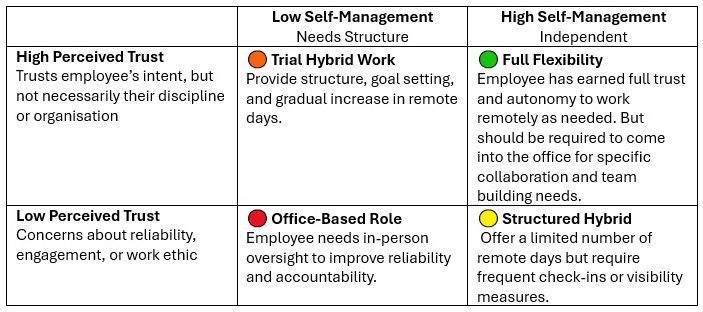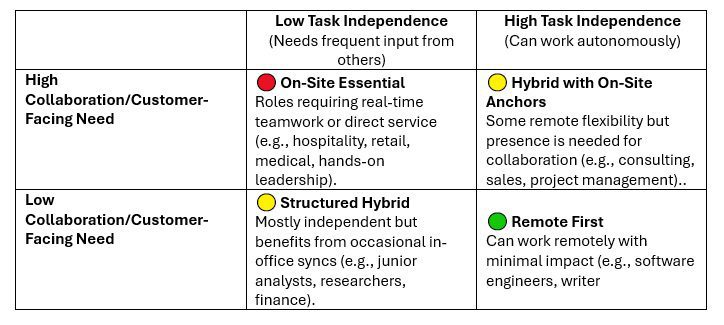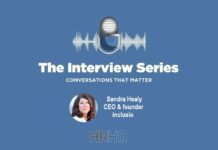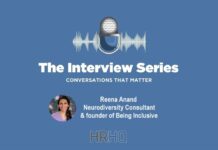by Stephanie Brady, Executive Coach, Team Coach, HR Consultant and owner of StephBe
Tired, bored, stressed, guilty, tired, twitchy, distracted, frustrated, irritated, and that’s all within a single two-hour commute. However, there is a dark side for remote working too. 86% of remote employees experience job burnout as compared to 70% of on-site employees.
It’s March 2025 and I am back commuting, short term. I don’t know how people are coping with this as a long-term option. I’m on the road before 6.30am, yet it feels like I am in a slowly moving carpark all the way to my client’s location. Take the normal commute time, double it and maybe add on a few more minutes for good luck, and you might make it to work on time! The traffic is worse, rent and buying in or near to Dublin is becoming impossible on an average office salary. The situation is reaching critical point for many people. But, so far, all cases brought to the WRC in relation to remote work have been found in favour of the employer.
As a former Head of HR I can empathise hugely with each side of the “back to the office” divide. I see the negative impact that working purely remotely has on connection, collaboration, loyalty, mental health and wellbeing. I see the positive impact remote working has on work life balance, productivity and the retention of valued employees.
Many leaders can’t believe the audacity of the demands of a handful of employees. Yet, these leaders are trying to navigate so many business, personal employee and disparate needs. Managers are painted as unreasonable if they say no to a request. Like many political areas of modern life, the conversation has become binary. When the reality is that the sweet spot is somewhere in the middle. We need to cocreate to make it work. Putting all the responsibility on the leaders is not going to work. As an employee its ok to have to prove your trustworthiness and productivity, not to be aghast when your manager questions it.
For people leaders it is very, very hard to manage poor performance when that person is working remotely. Those “bad eggs” are ruining remote and hybrid for everyone else. Conversely, I must note that I have extensive experience in “encouraging “managers to manage the poor performance of in-office employees. As a rule, performance management is hard, and we tend to avoid hard no matter where that employee is based.
- This brings me to the first issue and solution, trust.
What is trust? It is the firm belief in the reliability, integrity, and competence of a person, organisation, or system. Trust is foundational to relationships and teamwork. According to Bruce Daisley the impact of a high trust workplace leads employees to have more energy, productivity, and engagement combined with less burnout and stress.
As a leader or company, getting clear on, and communicating what builds and erodes trust is essential. How? I find the trust equation invaluable in coaching out the words and actions that can then be used in consistent communication and in managing poor performance.
The Trust Equation model was created by David H. Maister, Charles H. Green, and Robert M. Galford in their book The Trusted Advisor (2000).
The Trust Equation is:
Trustworthiness=Credibility + Reliability + Intimacy
______________________________
Self-Orientation
Where:
- Credibility = Your expertise, words, and credentials
- Reliability = Your consistency and dependability
- Intimacy = The level of safety and emotional closeness you create
- Self-Orientation = The extent to which you focus on yourself rather than the other person (lower is better for trustworthiness)
When coaching a leader to improve trust in their team I ask them to rate from 1-10 where each element is now and how they would improve that score. I also ask them how the team would rate the leader. Trust is a 2-way relationship and can be improved very quickly when we focus on exactly what needs to happen to improve it.
The words and ideas can then be made into a set of expectations that can be measured and managed.
Applying this to remote work decisions, I would recommend that every people leader plots each member of their team on a matrix measuring perceived trust and ability to self-manage.
Plot your team into the below boxes where:
Low Perceived Trust + Low Self-Management = Office Based role
High Perceived Trust + High Self-Management = Full Flexibility
Low Perceived Trust + High Self-Management = Structured Hybrid
High Perceived Trust + Low Self-Management = Trial Hybrid Work

Using the above matrix, a policy can be designed to encourage accountability and resulting development opportunities, ensure fairness and any discrimination concerns.
The policy should cover: The principles of the approach; description of the tiers; objective evaluation criteria; regular reviews and development plans and the appeals procedure.
- Using the matrix approach brings me to the second issue and solution.
How we work has changed. There is nothing more frustrating than battling the traffic to spend the day on zoom to colleagues in other locations or on quiet, deep work. We are working more collaboratively, yet there are not enough meeting rooms in most offices. There are not enough quiet spaces to get deep work achieved. Employees are battling a commute for a deeply dissatisfying office experience.
On the other hand, pre COVID we were demanding more glamourous places to work. We were comparing our office spaces to the cool tech companies. Employers spent a lot of money and time creating office spaces to attract talent, and a lot of those ended up with tumbleweed blowing through them.
We turn this challenge into a matrix approach to create fairness around level of collaboration required and independence of role.

- The third issue and solution is ensuring consistency of a guiding framework rather than a set rule.
The matrix approach is an interesting one because you can use the real needs of the business to create a clear and fair approach. You can create your own matrix using the examples I’ve shared. Then, bolstering the approach with a robust policy, workshops to support both leaders and employees and development opportunities to improve behaviours and performance.
However, the biggest challenge is often the differing and inconsistent views of the leadership team, their double standards and then inconsistency of approach to their own teams. All of this creates a system that is more complex and porous than it needs to be.
The double standards of leaders who cannot attend the office due to their own highly remote location demanding workers back in. The higher salary of leaders meaning they can live in much more central areas is a hot topic of discussion and leads to a huge lack of organisational trust.
Based on experience I would recommend businesses to do the following:
- Decide what qualities are the most important to matrix
- Create an accompanying policy
- Create a project plan and campaign to launch, land and measure the chosen approach
- Plot all employees
- Make a short list of employees who do not fit the structure
- Work with experienced HR to create a clear plan for each of these employees to either get them to a point where they can fit into the matrix. Failing this where the company sets a few clear rules for those who don’t fit.
- Create a separate rule for new employees which clearly states when they will be subject to the matrix guidelines and policy
Taking a matrix rather than a binary approach will give both the company and the employees
About the author
Stephanie has won awards on behalf of her employers for Employer Branding and Creating the Best Workplace, also achieving a place on The Great Place to Work List a number of times.
Stephanie adopts a personalised approach to coaching and consulting, tailoring strategies to meet the unique needs and goals of each client. By combining proven methodologies with innovative techniques, she empowers individuals and organisations to overcome challenges, maximize performance, and drive sustainable growth.











































